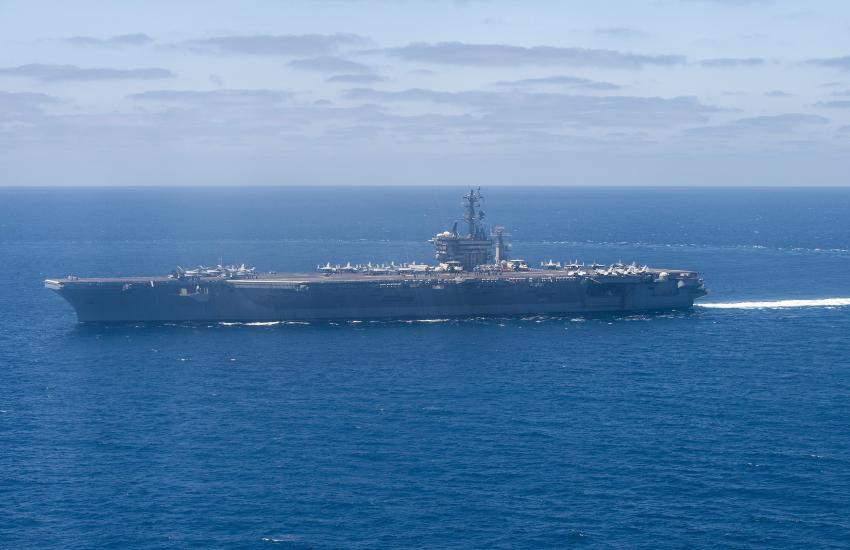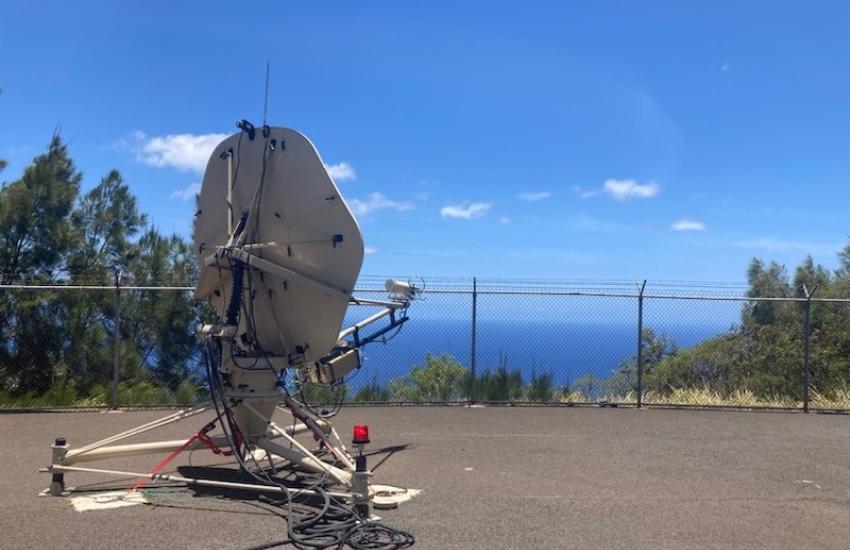Space Force Component Strengthens U.S. Indo-Pacific Command
The Indo-Pacific Region, the U.S. military’s largest area of responsibility, and some would say the most important region in terms of U.S. national security, falls under the purview of the U.S. Indo-Pacific Command (INDOPACOM), one of the seven U.S. geographical combatant commands. The U.S. Space Force has added a service component to the command, strengthening INDOPACOM’s space-related defenses at a time when the near-peer adversarial threat is growing from China and, to an extent, North Korea and Russia.
Led by Adm. John Aquilino, USN, INDOPACOM now has specific Space Force Guardians who are responsible for bringing space-based assets and capabilities to the commander, including a dedicated service leader at the command. The November 2022 activation of the Space Force service component, which started with about 20 Guardians, was an important development, said Brig. Gen. Anthony Mastalir, USSF, commander, U.S. Space Forces Indo-Pacific (SPACEFORPAC), Joint Base Pearl Harbor-Hickham, Hawaii, who has spent the last year building out the new service component—a measure he wished had come sooner.
“A lot of folks asked me early on what is the Space Force component and why do we need that,” said Gen. Mastalir. “The short answer is if you want to integrate space into the joint force, the way you do that is to present a commander to the combatant command, a service component commander that has the ability to command and control forces with assigned [personnel]. And that’s an important designation. In the military, command carries with it a very specific meaning. That gives Adm. Aquilino a commander that reports directly to him that brings space capabilities to bear for the joint force.”
U.S. combatant commands have had space operators who, prior to the creation of the Space Force in 2019, were embedded within command air components. The difference now is a larger and specifically designated force, the general said.
“Those 20 individuals had been spread either throughout the 613th Air Operations Center or were at the PACAF headquarters A-staff,” Gen. Mastalir stated. “We took those Guardians as the initial cadre to stand up the component, and now with the most recent PCS [permanent change of station] cycle, we have doubled in size.”
Moreover, that additional manpower does not just represent space operators. The Space Force service component at INDOPACOM now includes cyber experts that can protect space-based assets, space-related intelligence officers and procurement officials. “While we started with operators, you need more than just operators to build out a service component,” he explained. “Now we have intel, we have cyber, we have acquisition professionals that can help do all the things the service component needs to do.”
Gen. Mastalir is building out the office for the component’s intelligence lead, or S2, which will ensure that space intelligence is properly integrated into the Joint Intelligence Operations Center, for example, so that relevant information is brought at a timely pace from intelligence channels to Adm. Aquilino.
“The existing infrastructure within INDOPACOM was better than most when it comes to space intelligence,” the general shared. “And that’s primarily a result of the fact that we have potential adversaries in this AOR [area of responsibility] that are extremely space savvy with a lot of capability. However, having a dedicated team that’s 100% focused on what’s happening across the space landscape with respect to either China or North Korea or even Russia is very beneficial for Adm. Aquilino in his role as the combatant commander.”
The Space Force also established two component field commands for U.S. Central Command and U.S. Forces Korea in late 2022 and plans to create additional service components at each of the remaining combatant commands.
Part of standing up the service component at INDOPACOM also involved incorporating Guardians into the command’s joint all-domain warfighting processes, including the organization’s tactics, techniques and procedures. “Our job is to make sure that we are integrated across all of the components,” Gen. Mastalir said. “Because in all theaters, especially in INDOPACOM, the key to integrated deterrence is ensuring that you have all-domain capabilities synchronized to support the joint force if and when we’re called upon. And it is really important that SPACEFORPAC plays that role. One of the keys for us to be able to integrate at the operational level and integrate into the battle rhythm of the combatant command is having the right representatives in the right working groups so that space capabilities can be integrated from the onset.”
Given that INDOPACOM executes about 120 exercises a year—as part of making sure that the Indo-Pacific region remains free and open from adversarial tyranny—the new Space Force component had to be certain it could scale up to support that activity.
In addition, Gen. Mastalir is “closely” examining how to harness commercial space capabilities for the command, including what solutions could augment their traditional space-based intelligence and how exactly capabilities could be incorporated.
“You have a lot of commercial space capability that is available today that was not available 10 years ago, and we really have seen this play out in Ukraine with Russia’s illegal war. You think about Russia as being a relative space power and having space superiority over Ukraine at the beginning of that conflict. But then somewhere between six and 12 different commercial companies immediately came to Ukraine’s aid in terms of being able to provide space capability. And I’d say that today, well, Russia probably has better or more significant space capability than Ukraine. But they certainly don’t have space superiority over Ukraine. There is this equalizing effect that commercial was able to bring to that fight. So, how do we leverage commercial here in INDOPACOM?”
For example, for the joint force and other warfighters, SPACEFORPAC presents an integrated defensive space package to help detect any type of electromagnetic interference or jamming on satellite communication links. The component shares that information with soldiers, sailors, airmen, Marines and other Guardians forward deployed in real time.
“Or in GPS-denied environments, we [will] detect GPS jamming or we provide through OPIR, overhead persistent infrared, that unblinking eye from space that could detect potentially any threats in the area, to immediately identify any missile launches, for example,” the commander stated. “And missile warning continues to be a very important part of what we bring to the combatant command.”

Indeed, the space threats are considerable that come from what China and Russia are building in terms of anti-satellite capabilities—whether they are on-orbit capabilities or launched into space designed to strike U.S. or allied satellites, or involve directed energy lasers designed to blind or destruct satellites.
“When you think about those kind of threats, yes, we have to protect against those,” Gen. Mastalir noted. “We have to have a resilient space architecture. We have to be able to fight through jamming and interference and blinding so that we can continue to present and provide space combat effects to the joint force.”
It is a greater threat, however, that gives the commander pause: the potential ability of adversaries to strike the U.S. military directly from space.
“There’s another element when we think about threats and that is space-enabled attacks against our forces,” Gen. Mastalir emphasized. “[China will have] this command control, communications, computers, cyber, intelligence, surveillance, reconnaissance and targeting (C5ISRT) infrastructure that’s designed to generate long-range precision strikes. Those satellites provide China the ability to target our terrestrial forces, aircraft carriers, our cruisers, our destroyers, our tankers, our AWACS [Airborne], all of the high-value assets upon which we depend to generate combat power.”
The Space Force, then, has the responsibility to understand the adversary’s C5ISRT architecture and provide the joint force the ability to neutralize those space-enabled threats, Gen. Mastalir emphasized.
“The difference is, on one hand, you’re talking about protecting satellites, which is basically just a machine, a robot in space,” the commander said. “It’s a completely different story when you’re talking about 5,000 souls aboard a U.S. Navy aircraft carrier and protecting that joint force.”




Comments